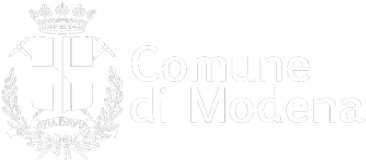Fiorano race track - Ferrari test track
The term test track is used to underline the marked difference between this track and a race track actually designed for races. Indeed, there are at least two substantial differences: the absence of spectators and the presence of only one moving vehicle on the track at a time. The track area is located between two national roads: no. 12 and no. 467.
The facility is set in a natural environment and, without being visibly forced in any way, it preserves the "rustic" conditions, as they are deemed a psychologically valid contrast to the strictly technological environments.
The climatic conditions of the Modena foothills favour frequent use of the track. With a minimum width of 8.40 m it is a road-like track. It has a tortuosity index of 1.24 with curved tracts covering 1,661 m and straight portions for a total of 1,339 m. The length of the standard tract is 3,000 m, which becomes 3,021 with the new "chicane" created in 1992. The average speed on the track is more than 160 km/h with peak speeds of more than 290 km/h.
The specific size of the track has been designed to resolve precise problems, such as: practical relationship between the process of right and left turns; turns with a differential radius ranging from 13.71 to 370 m; curves having different characteristics because they have one or more centres. While under the conviction that it is possible to replicate the curves typical of other race tracks, an attempt has been made to build this track with the salient features of European race tracks. Thus it is possible to check vehicle performance under limit braking conditions.
Narrow, winding turns to the right and to the left make it possible to check the braking system when entering the turn and the elasticity of the motor when exiting. The sequence of two turns of equal radius makes it possible to verify the centrifugal effects on the fuel systems and vehicle maneuverability in the area connecting right and left turns. The ascent ramp-with a 6.50% slope entering into curve 6 and the straight portion between curves 6 and 7, with their difference in level with an initial elevation, and valley and then another elevation-has been aligned to highlight variations in stability during trajectory changes.
The portion between curves 10 and 14 has been conceived to highlight vehicle aerodynamics. The "chicane 15" provides useful information regarding the engine and frame during acceleration and places particular emphasis on traction. The track also provides an advantage in the sunlight: in the most difficult portions of the track, the two continuous yellow lines on the sides of the lane provide continuity, showing the unwinding of the track. The transverse slope is never less than 2.50%, thus ensuring that any rain water will run off.
A "steering pad" system has been arranged on the north side, between curves 3 and 4, to measure tire drift and to control how the suspensions and the vehicle respond in the curve.
The system comprises five 5-meter lanes plus one 4-meter lane. The minimum radius is 25 meters with a maximum of 55 meters.
They are arranged at appropriate points along the track to guide entrance into the underpass with its 18 meter opening. Moreover, at the end of the runway and at curves 2, 4, 6, 9, 11, 13 there are safety areas with gravel beds made of spherical stones.
The circuit has a remote measurement system that provides the box with all information regarding the conditions developed in the vehicle: technical data, speed, lap times, etc.
A closed-circuit television system, with 10 fixed cameras, can film the vehicle along the entire track.
The box includes a television, chronometry and telemetering control room.
The track is equipped with fire-fighting equipment, an ambulance and a general services unit including a workshop, a reception yard and parking lot for the buildings, offices and guest house.
How to get there
By car: from Modena take national road S.N. 12 called Via Giardini and in Formigine take provincial road S.P 16 and follow the indications for Fiorano Modenese.





